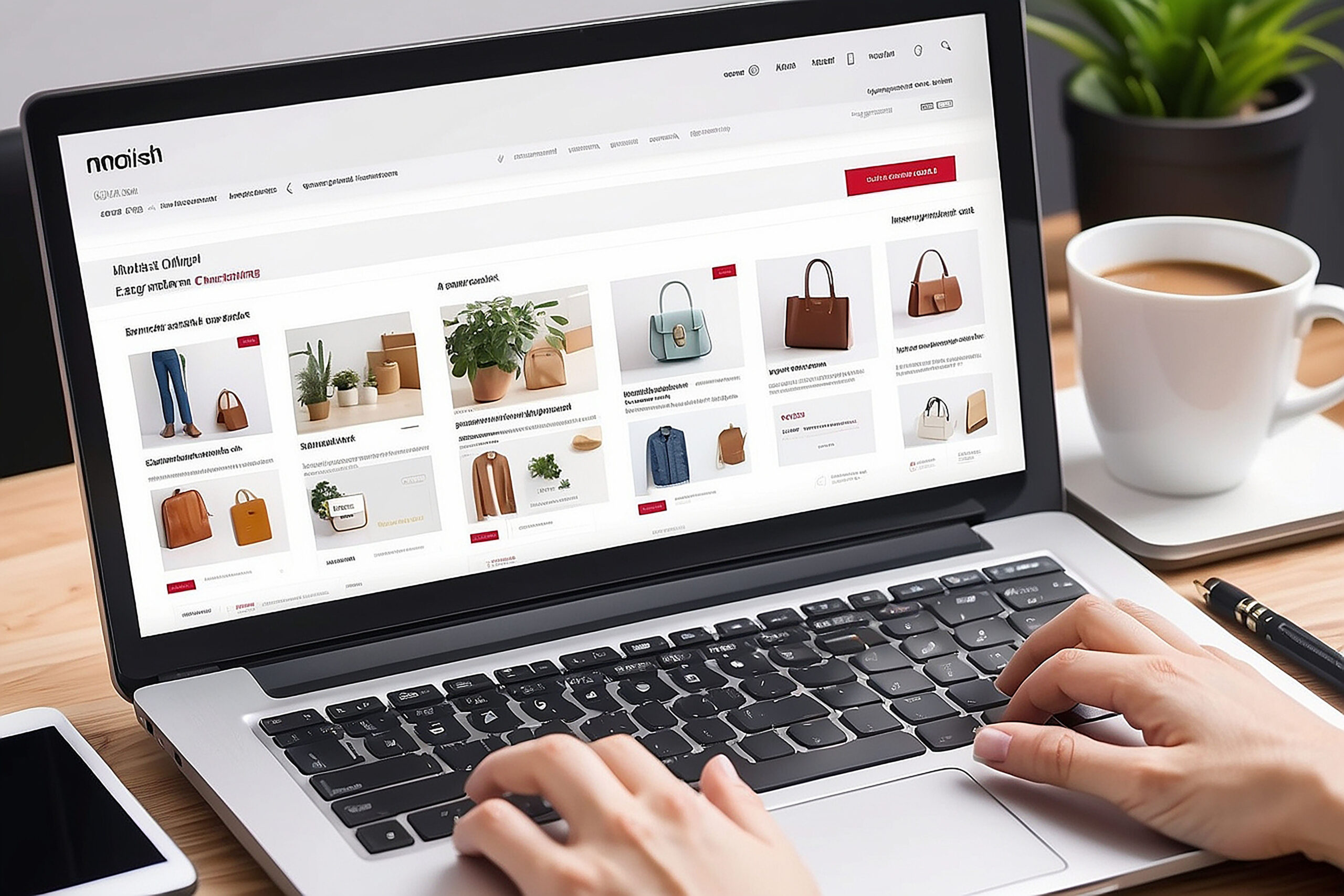Leveraging AI-Driven Product Research and Store Optimization
In recent times, AI has emerged as a viral trend, transforming various industries and presenting incredible opportunities for entrepreneurs. This comprehensive guide will demonstrate how you can harness the power of AI to build a thriving dropshipping business, even if you’re starting from scratch.
By leveraging AI-driven product research and streamlined store optimization techniques, you can create a profitable online venture in just a few hours. Embrace the potential of AI and discover how it can simplify the process of launching and scaling your dropshipping business.
We strongly recommend that you check out our guide on how to take advantage of AI in today’s passive income economy.
Table of Contents
The Importance of Choosing the Right Product
Selecting a winning product is the foundation of a successful dropshipping business. Without a compelling product, your efforts may be in vain. To increase your chances of success, focus on products that possess the following key attributes:
- Wow factor: The product should have either visual appeal or problem-solving capabilities that can go viral.
- Content creation potential: Ensure that you can create a wealth of content around the product for advertising purposes.
- Logistics ease: Avoid products that are too heavy or expensive to ship to your customers.
- Community backing or direct market fit: Choose a product that resonates with a specific audience, allowing you to build a community around it.
AI-Driven Product Research Strategies
AI-driven product research is a game-changer for dropshipping entrepreneurs. By leveraging AI tools, you can quickly identify trending products and validate their potential. Here are two powerful strategies to find winning products:
- TikTok Creative Center: This database compiles viral TikTok videos, enabling you to search for product-based ads using advanced filters. Focus on videos optimized for conversions to identify active products being sold by companies.
- TikTok Spy Tool on AutoDS: This tool takes product research to the next level by offering advanced filtering options and keyword search capabilities. You can easily find products within specific niches and analyze their performance on TikTok.
When utilizing these AI-driven product research strategies, dedicate time to intermittently search for products throughout the day. Refresh your search using different retention periods (e.g., 7-day, 30-day) and create a document to rank your top five products based on their potential.
Validating Your Product Choice
Once you have a list of potential products, it’s crucial to validate their viability. AI-driven product research tools can help you determine if a product is being actively sold and assess the level of competition. Here’s how to approach product validation:
- Analyze competitor sales: Use AI-powered tools to track the revenue generated by Shopify stores selling similar products. This will give you an idea of the product’s potential and the market demand.
- Scan competition on ad platforms: Utilize AI-driven ad research tools to examine the ads being run by competitors on platforms like Facebook. Analyze the performance of their ad creatives, targeting strategies, and overall market saturation.
By validating your product choice through AI-driven research, you can make informed decisions and minimize the risk of investing in a product with limited potential.
Creating Your Shopify Store with AI Assistance
Building a professional and user-friendly Shopify store is essential for converting visitors into customers. However, creating a store from scratch can be time-consuming and confusing. Fortunately, AI-powered tools can streamline the entire process, allowing you to set up your store in a matter of minutes.
Leveraging AI for Seamless Store Creation
With the help of AI, you can generate a custom-built Shopify store tailored to your chosen niche. Simply input your preferences, and the AI tool will handle the rest, setting up your store’s backend and importing a pre-designed theme.
This AI-assisted store creation process eliminates the need for extensive coding knowledge or design skills, making it accessible to entrepreneurs of all backgrounds. Plus, the AI-generated store comes pre-loaded with essential apps and optimized settings, saving you valuable time and effort.
Customizing Your AI-Generated Store
While the AI tool provides a solid foundation for your Shopify store, it’s important to add your own creative touch. Take the time to customize your store’s branding, product descriptions, and imagery to align with your target audience’s preferences.
Consider the following aspects when personalizing your store:
- Brand name and logo: Use AI-powered tools like Canva to create a unique and memorable brand identity.
- Product descriptions: Leverage AI-driven product research insights to craft compelling product descriptions that highlight the key features and benefits.
- Navigation and user experience: Ensure that your store is easy to navigate and optimized for mobile devices, as most of your traffic will come from mobile users.
By combining the efficiency of AI-generated store creation with your own creative customization, you can establish a professional and engaging online presence that resonates with your target audience.
Driving Traffic and Sales with AI-Powered Advertising
With your Shopify store set up and optimized, it’s time to focus on generating traffic and sales. AI-driven advertising strategies can help you reach your target audience effectively and maximize your return on investment.
Creating High-Converting Ad Creatives with AI
Compelling ad creatives are crucial for capturing the attention of potential customers and driving them to your store. AI-powered tools like ViralEcom Ads can generate high-quality video ads specifically designed for your product.
These AI-generated ads often incorporate trending elements, such as the viral AI voiceover, to increase engagement and conversions. By leveraging AI for ad creation, you can save time and resources while ensuring that your ads are optimized for performance.
Launching Targeted TikTok Ad Campaigns
TikTok has emerged as a powerhouse for dropshipping advertising, thanks to its vast reach and engaged user base. To launch successful TikTok ad campaigns, follow these steps:
- Set up your TikTok Ads Manager account and integrate your Shopify store’s pixel for accurate tracking.
- Define your target audience based on demographics, interests, and behaviors relevant to your product.
- Upload your AI-generated ad creatives and create ad variants to test different angles and messaging.
- Launch your campaigns with a modest budget and monitor their performance closely, making data-driven optimizations as needed.
By combining AI-powered ad creation with targeted TikTok advertising, you can effectively reach your ideal customers and drive substantial traffic to your store.
Optimizing Your Campaigns with AI Insights
As your TikTok ad campaigns run, AI-driven analytics tools can provide valuable insights into their performance. These tools can help you identify which ad creatives, targeting strategies, and landing pages are generating the best results.
Use these AI-powered insights to continuously refine your campaigns, allocating more budget to the top-performing ads and making data-driven decisions to improve your overall return on investment.
Scaling Your Dropshipping Business with AI
Once you have established a profitable dropshipping business, AI can help you scale your operations efficiently. From automating order fulfillment to optimizing your supply chain, AI-driven tools can streamline various aspects of your business.
Automating Order Fulfillment and Customer Service
AI-powered dropshipping automation tools can handle tasks such as order processing, tracking, and updating, freeing up your time to focus on growth strategies. Additionally, AI-driven chatbots can provide instant customer support, addressing common queries and concerns without requiring manual intervention.
By leveraging AI for automation, you can scale your business without significantly increasing your workload or operational costs.
Optimizing Your Supply Chain with AI
As your business grows, optimizing your supply chain becomes increasingly important. AI-driven tools can analyze data from your suppliers, identifying potential bottlenecks and recommending strategies to improve efficiency.
These AI-powered insights can help you make informed decisions about inventory management, supplier relationships, and logistics, ensuring that your business can handle increased demand without compromising on quality or customer satisfaction.
Conclusion
By harnessing the power of AI, you can revolutionize your dropshipping business and achieve success in the competitive e-commerce landscape. From AI-driven product research to streamlined store creation and targeted advertising, AI offers a wealth of opportunities for entrepreneurs.
Remember, the key to success lies in taking action and implementing the strategies outlined in this guide. Start by conducting thorough AI-driven product research, validate your product choice, and create a compelling Shopify store with the help of AI tools.
Once your store is live, leverage AI-powered advertising solutions to drive targeted traffic and optimize your campaigns for maximum profitability. As your business grows, utilize AI-driven automation and supply chain optimization to scale your operations efficiently.
Embrace the potential of AI and embark on your dropshipping journey with confidence. The opportunities are vast, and with the right mindset and tools, you can build a thriving online business that generates substantial income.
FAQs:
Q: What are the problems with AI research?
A: AI research faces several challenges, including:
- Lack of explainability: Many AI models, particularly deep learning models, are often considered “black boxes,” making it difficult to understand how they arrive at their decisions.
- Bias and fairness: AI systems can inherit biases from the data they are trained on, leading to potentially discriminatory outcomes.
- Data privacy and security: The use of large datasets in AI research raises concerns about data privacy and the potential for misuse or unauthorized access.
- Ethical considerations: AI research must grapple with ethical questions surrounding the development and deployment of AI systems, such as their impact on jobs and the potential for misuse.
- Scalability and computational resources: As AI models become more complex, they require significant computational resources, which can be a barrier to entry for some researchers and organizations.
Q: How to use AI to do product research?
A: AI-driven product research involves leveraging AI tools and techniques to gather insights and validate product ideas. Some ways to use AI for product research include:
- Sentiment analysis: AI algorithms can analyze customer reviews, social media mentions, and other online content to gauge consumer sentiment towards specific products or features.
- Trend forecasting: AI models can identify emerging trends and patterns in consumer behavior, helping businesses stay ahead of the curve and develop products that meet evolving needs.
- Competitor analysis: AI tools can scrape and analyze data from competitor websites, social media, and other sources to provide insights into their product offerings, pricing strategies, and marketing tactics.
- Personalized recommendations: AI-powered recommendation engines can help businesses tailor their product suggestions to individual customers based on their preferences and past behavior.
- Predictive analytics: AI algorithms can analyze historical sales data and other relevant factors to predict future demand for products, helping businesses optimize their inventory and production planning.
Q: How does AI affect product development?
A: AI has a significant impact on product development, enabling businesses to:
- Accelerate the design process: AI-powered tools can automate and streamline various aspects of product design, from ideation to prototyping, reducing development time and costs.
- Enhance product personalization: AI algorithms can analyze customer data to create personalized product recommendations and customized offerings, improving customer satisfaction and loyalty.
- Optimize product performance: AI can be used to simulate and test product performance under various conditions, helping businesses identify and address potential issues before launch.
- Improve quality control: AI-powered computer vision systems can detect defects and anomalies in products during the manufacturing process, ensuring higher quality and reducing waste.
- Enable predictive maintenance: AI algorithms can analyze sensor data from connected products to predict when maintenance or repairs will be needed, minimizing downtime and extending product lifespan.
Q: How do you keep up with AI research?
A: Staying up-to-date with AI research is crucial for professionals and enthusiasts alike. Some effective ways to keep up with the latest developments include:
- Follow leading AI researchers and influencers on social media platforms like Twitter and LinkedIn, where they often share their work and insights.
- Subscribe to AI-focused newsletters, blogs, and podcasts that curate the latest research papers, news, and trends in the field.
- Attend AI conferences, workshops, and webinars to learn from experts and network with other professionals in the industry.
- Join online communities and forums dedicated to AI, such as Reddit’s r/artificial and r/MachineLearning, to engage in discussions and learn from others’ experiences.
- Enroll in online courses and educational programs offered by reputable institutions to gain a deeper understanding of AI concepts and techniques.

We strongly recommend that you check out our guide on how to take advantage of AI in today’s passive income economy.




